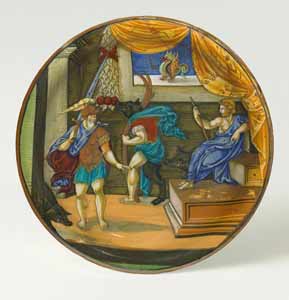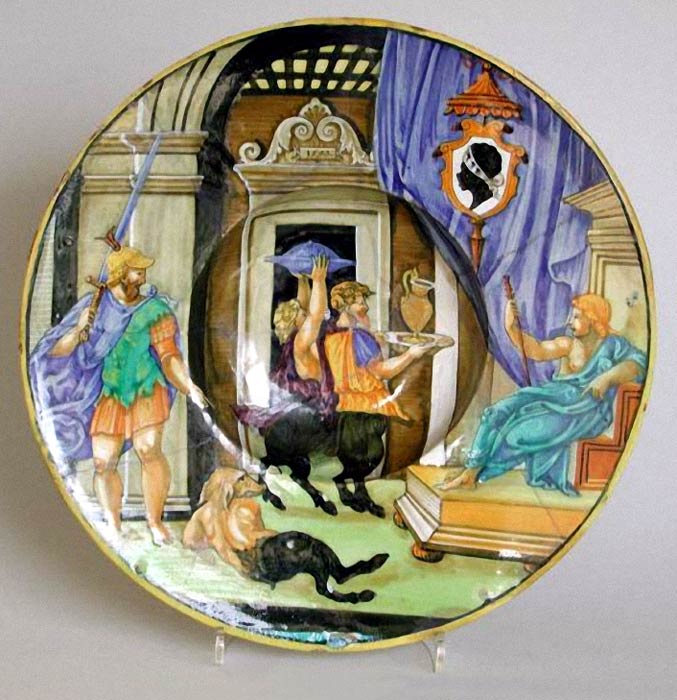Italy, (b. ca. 1486-7; d. ca.1542)

-
Circe, Ulysses and his companions
- low plate
- (1533), maiolica, tin-glazed (luster) earthenware
- [workshop of Maestro Giorgio Andreoli]
- diameter: 10.1 in. (25.5 cm.)
- Musée du Louvre, Paris
-
Editor’s Note:
For both the plate above and bowl shown below the ceramist was Francesco Xanto Avelli and the production site was the workshop of Maestro Giorgio Andreoli of Gubbio or possibly in Urbino, Italy.
About the Artist
Avelli Xanto Francesco (b. ca. 1486-7; d. ca.1542). was a freelance Italian maiolica painter and poet. He is also known as Xanto, Xanto da Urbino and Francesco Xanto Avelli da Rovigo. Uncharacteristic of other maiolica painters of the time, Avelli signed, dated, and inscribed many of his works. Because of this, more pieces are credited to him with certainty than are credited to any othe maiolica painters of the time.
For his wares and their inscriptions, he used secular and religious scenes from classical and contemporary literature, which he often altered to suit his compositions. He also depicted contemporary events, sometimes in allegorical form.
His style is characterized by a strong sense of line, an interest in anatomy and architecture and the use of a broad and usually harmonious palette that sometimes included iridescent lustres. His imaginative compositions frequently relied on a montage technique in which he juxtaposed figures drawn from prints, occasionally borrowing an entire scene from one graphic source. [DES-01/11]
Maestro Giorgio Andreoli (b. ca. 1465/1470; d. ca. 1553) was an Italian master potter. He is also known as Giorgio da Gubbio, Giorgio di Pietro Andreoli and Maestro Giorgio.
Andreoli specialized in maiolica, that is tin-glazed pottery enriched with luster. It was this technique of applying red and gold metallic luster to the surface of pottery in a third firing that was the basis of Giorgio’s continuing success.
Andreoli controlled a pottery workshop, initially with his brothers, Salimbene and Giovanni, and continued later with his sons Vincenzo and Ubaldo. His original workshop was in the town of Gubbio and later he also opened a shop in Urbino. [DES-01/11]

